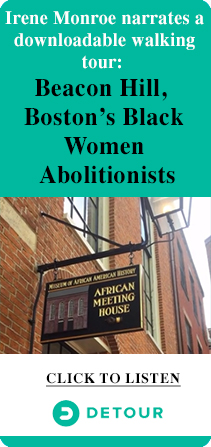Every Monday morning, “Alex” (not his real name) and I met for breakfast at our favorite dive in Harvard Square. I would notice visible bruises and cuts on his face, arms, and legs, but I assumed that the black-and-blue marks were simply par for the course for a guy who enjoyed playing rough-and-tumble scrimmage football on the weekends. I don’t recall a time when Alex didn’t have a knot on his head, a cut on his lip, bite marks on his skin, welts on his arms, or stitches.
However, I did notice over time that the sweet teddy bear of a guy who sat across the table from me on Monday mornings with a smile as wide as the Charles River no longer looked merely injured; he looked beaten up. When I began asking Alex about his bruises, he shrugged off my queries and talked about something else. Some Monday mornings he’d call me at the last minute to cancel, or he wouldn’t show up at all. Then one morning he told me that he was in Mount Auburn Hospital. His partner had stabbed him severely.
October is Domestic Violence Awareness Month, but there is not enough attention, education, intervention, and advocacy around this issue in lesbian, gay, bisexual, transgender, and queer (LGBTQ) communities of color. Surveys indicate that 25 to 33 percent of the LGBTQ population will experience some form of intimate partner violence (IPV) in their lifetime, and the Centers for Disease Control and Prevention’s (CDC) National Intimate Partner and Sexual Violence Survey, conducted in 2010, found that LGBTQ communities of color are one of the demographic groups experiencing a particularly high incidence of IPV. However, understanding how prevalent IPV is in these communities is impeded by social stigmas and cultural taboos, including racism and other forms of oppression and discrimination.
Further impeding our ability to obtain accurate statistics on IPV in LGBTQ communities of color is the fact that same-gender IPV is clouded with myths and misunderstandings. For example, there is the frequent, erroneous assumption that because the victim and the abuser are of the same gender and are in a consensual sexual relationship, the battering must have started as a mutual act of S&M that, somewhere during the sexual encounter, got violently out of hand. Another problem is the conflation of same-gender IPV with homosexuality itself. Sadly, because these misunderstandings about same-gender IPV still abound among health care workers and law enforcers, LGBTQ victims of IPV, particularly those of color, are less likely to seek out services and resources.
The term “intimate partner violence” is not limited to acts of physical or sexual violence; it can also refer to acts of psychological violence, such as threats or stalking. Because Alex wasn’t out to his scrimmage football team, his partner, a flamboyant, effeminate man who couldn’t be introduced as just a buddy without arousing suspicion, could only watch him play from a distance. Alex’s partner became jealous as he watched friendly, innocent pats on the butt during games, and he began stalking Alex. On that fateful Monday morning when Alex and I were supposed to meet, his partner had accused him of an affair, and a fight had ensued.
There are at least several factors contributing to the ongoing high incidence of IPV in communities of color. One is the dominant view that regards black males as the face of the social ill of violence. Alex was seen several times for his scrapes, cuts, and bruises in the same emergency room at the same hospital. However, because violence is associated with young black males to the point of being expected of them, few health care workers suspect that a black man exhibiting physical injuries might be a victim of IPV, so IPV-specific protocols and treatments are rarely introduced for these patients.
Another factor is the lack of police intervention. The police were called to Alex’s house several times, by both Alex and his partner. If they came at all, when they looked at Alex — African-American, 6-foot-2, 200 pounds — and then at his partner — white, 5-foot-9, 160 pounds — they assumed that Alex was the abuser.
Also contributing to the perpetuation of IPV in LGBTQ communities of color is the belief among some black folks that considerations to the experience of racism outweigh the individual’s right to a safe, healthy, violence-free relationship. In relationships where both partners are black, many victims decide not to prosecute their partners, for fear of community abandonment, isolation, and scorn. Rather than hold their partners accountable for their actions, these victims rationalize the violence as a result of persistent micro- and macro-level racism that their partners encounter on a day-to-day basis.
But not all LGBTQ people of color feel that way. According to Sean Smith, a student at Randolph-Macon College, where he serves as the Associate Vice President of Programming and Response at the Sexual Assault Prevention Association:
“People of color are expected to stay silent in the face of violence and as part of the LGBTQ community the silence becomes louder when law-enforcement, judicial and political figures ignore our calls for help. Not having power over our own behaviors and emotions causes us to exert dominating and violent attitudes within our community and toward our partners.”
Resources and services have to be made available to victims of intimate partner violence in LGBTQ communities of color, and this is the time to reach out to us. Everyone deserves a safe, loving, healthy, violence-free relationship. LGBTQ communities of color must embrace the fact that they do too.



